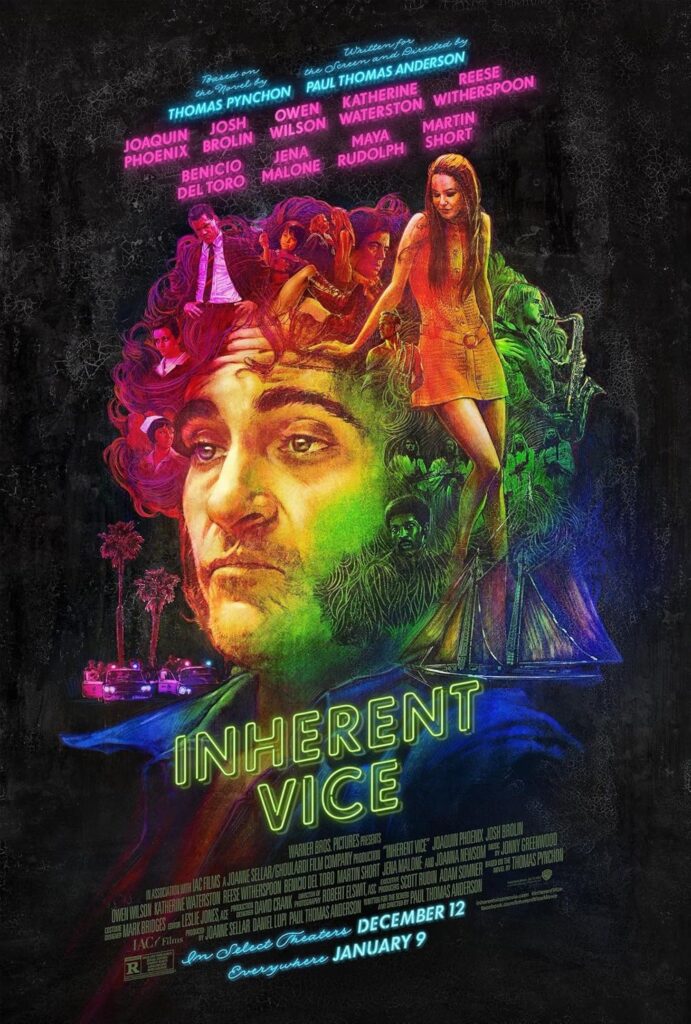
Next up, we have 2014’s Inherent Vice. I’m going to be brutally honest. If my interest in PTA’s films began to fade with The Master, then this film continued with the trend. As always, potential spoilers ahead.
Inherent Vice follows Larry “Doc” Sportello, a well-intentioned but fumbling stoner, hippie, and private investigator embroiled in the criminal underworld of 1970 Los Angeles, investigating three cases linked by the disappearance of his ex-girlfriend and her wealthy new boyfriend. Joaquin Phoenix reunites with Anderson to play Sportello. The film’s cast is stacked with great actors in small supporting roles, including Josh Brolin, Owen Wilson, Reese Witherspoon, Benicio del Toro, and Martin Short. My favorite performance in the film is Katherine Waterston, as Doc’s ex-girl, Shasta Fay Hepworth, who sets the story in motion.



The first adaptation of a Thomas Pynchon novel, the project was announced in 2010. Anderson wrote his initial draft of the script after The Master fell through. Anderson allegedly adapted the 384 page novel faithfully, line by line, before making cuts. Eventually, funding for The Master came through and Anderson shelved the film temporarily. After releasing The Master in September 2012, Anderson continued work on the film. Once he had a finished screenplay, Warner Bros. secured the distribution rights. When the film was in its early stages, Robert Downey Jr. was attached to play Doc. However, by early 2013, Anderson replaced him with Phoenix, whom he wanted to work with again. Downey claimed that Anderson had told him he was too old for the part. Regardless of how that came about, I think casting was the better choice. The film had a limited release in December 2014 before going wide in January 2015.
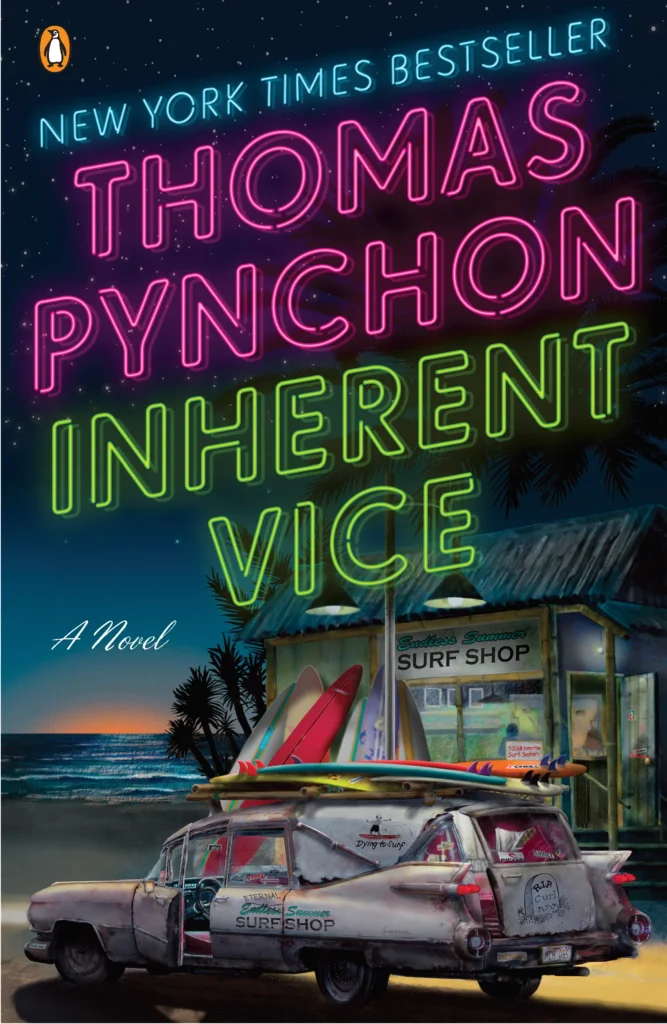

Casting Joaquin Phoenix as Doc was a surprising, but smart move. Phoenix is shockingly funny in this film. I say shockingly, because this is his first true comedic role, after twenty years of dramas and more serious films. It’s vastly different from his role as Freddie Quell in Anderson’s last film, The Master, but the decision to cast him pays off in spades. Phoenix is involved in both the film’s funniest and heartfelt moments. His banter with del Toro as his lawyer, Sauncho, (specializing in maritime law) are among some of the funniest in the film. “Whose your client?” Doc asks Sauncho, after he sides with the police in a matter. “Clients pay for services, Doc. Clients pay,” Sauncho, somewhat irritated, reminds Doc. Their banter in the seafood restaurant where they discuss everything from the mafia, to Jimmy Hoffa, to these companies that use white people as spokespeople, is also quite amusing.
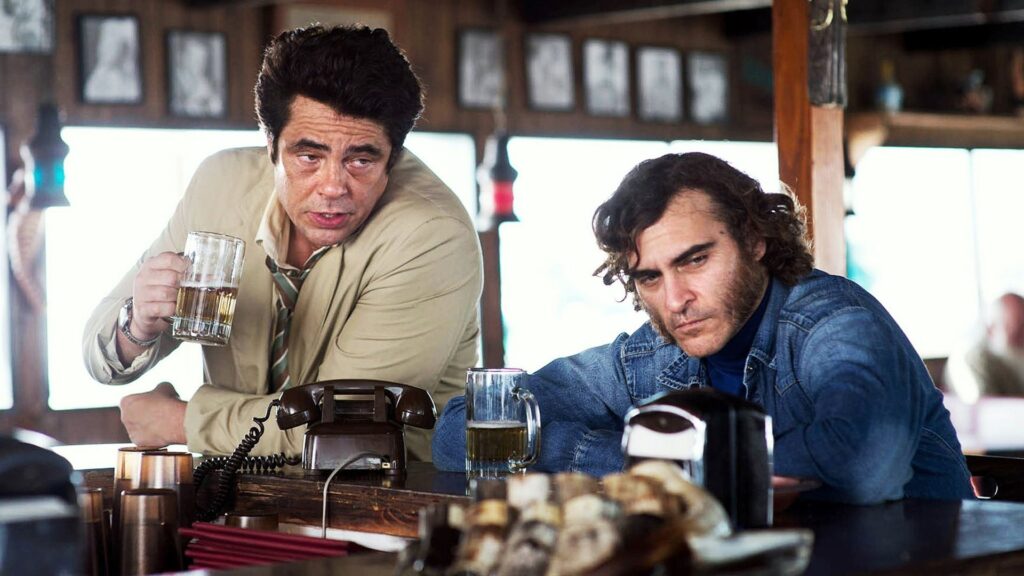
Also amusing is the relationship between Doc and Lt. “Bigfoot” Bjornsen (Josh Brolin). The relationship is antagonistic, that’s for sure, but not quite hatred. It’s clear that both men have a mutual respect for the other, despite not wanting to admit so. Despite frequently beating him up and breaking down his door, Bigfoot trusts Doc enough (for the most part) to call him during his off hours to update him about the case and Shasta’s whereabouts. As an actor, I love Josh Brolin. I think his presence makes everything better, and this is no exception. Bigfoot, despite coming across as a dick, he’s more complex than we initially realize. On the force, he’s notorious for his multiple civil rights violations and for taking on other money making ventures outside of the police department. As the narrator mentions in his introduction, Bigfoot is a member of the Screen Actors Guild. He shows up as an extra in a police drama Doc watches on TV and in commercials for the housing development company owned by the missing entrepreneur, Mickey Wolfman. However, below the facade is sadness. Upon a closer look, Anderson shows the audience that Bigfoot is depressed over the recent murder of his partner, by stringing together a bunch of scenes where a melancholy Bigfoot eats his frozen chocolate dipped bananas.
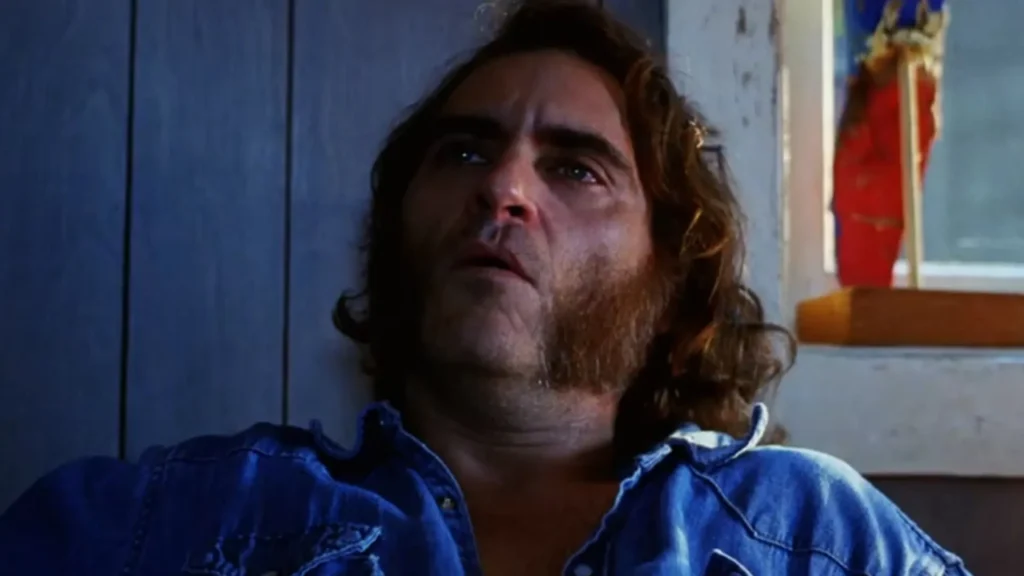
With all that said, Brolin is also surprisingly funny. Like Phoenix, Brolin wasn’t known for his comedic chops. Sure, he was in Men in Black 3 and Goonies as a young adult, but he was more famous for dramas like No Country for Old Men and American Gangster. In a particularly amusing moment, Bigfoot’s wife steals the phone and berates Doc for causing Bigfoot so much stress. She also reveals that Christian (his real name) is in therapy because of him (probably not entirely true). Bigfoot reminds her that the department pays for some of it, causing his wife to retort, “only after paying a deductible large enough to choke a horse.” Not only is this funny, but it gives insight into the marital dynamics between Bigfoot and his wife.
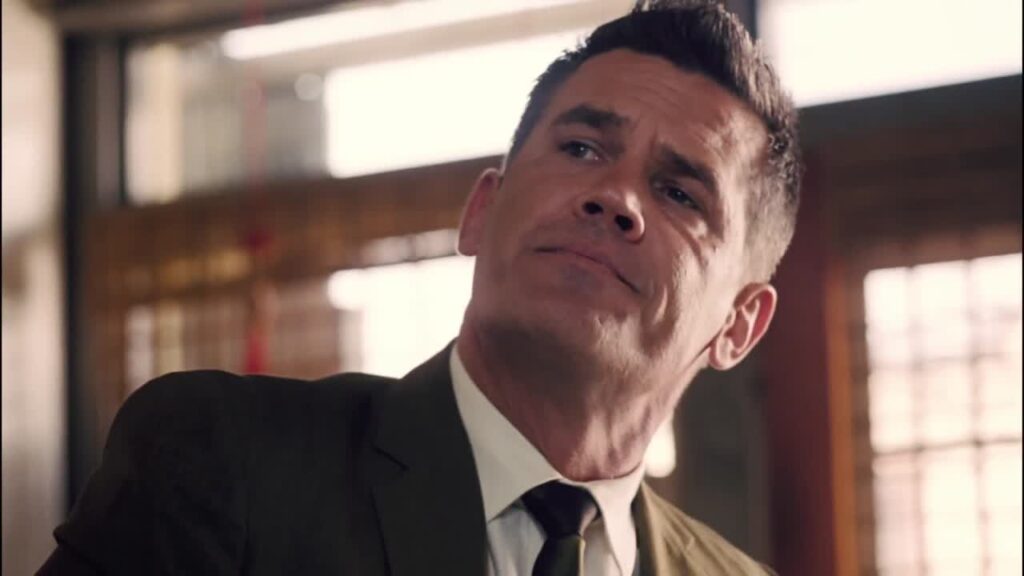
The humor is at its best when Anderson allows Phoenix and Brolin’s chemistry to shine through. In one scene in Bigfoot’s office, he discusses with Doc how Shasta Fay ran away with Mickey Wolfman. “I heard they were f-u-c-k-i-n-g-ing,” Bigfoot tells Doc, as he makes sexual hand gestures. He replies, “Fucking-ing?” Another priceless moment is when Bigfoot calls up Doc to let him know that Shasta Fay is “gone.” Doc, getting emotional, is questioning him about what happened to Shasta. “I don’t know,” Bigfoot tells him. “She’s vanished. She’s gone.” Doc replies, “Gone or vanished?” “She’s out there and we don’t know where.” It’s a simple little play on words, but the confusion behind Shasta’s whereabouts is funnier than it should be, thanks to the performances of Phoenix and Brolin.

Pivoting back to Phoenix, despite being hilarious, he also carries a lot of emotional weight. While the confusion of Shasta’s whereabouts, “gone vs. vanished,” was played for laughs, you can see the fear in Doc’s eyes when he thinks she is dead. One of the most powerful scenes with the two characters is a flashback to a dry spell. Doc, Shasta Fay, and Sortilège play with a Ouijia Board. It directs them to an address where they think they can score dope. When they arrive, they find it to be a locked corner property and as the rain pours down, they play around and have a good time. It was late in their relationship and although narration reveals that Shasta Fay was already half-way out the door, it is a moment that Doc cherishes. Despite always having a soft spot for Shasta Fay, Doc also has a soft spot for Penny Kimball, the Deputy D.A. he is currently seeing (reuniting Phoenix with his Walk the Line co-star Reese Witherspoon). Despite being what others call a “hippie scum,” Doc has morals. He refuses to take advantage of the drugged-out eighteen year-old Japonica, whom he once tracked down on behalf of her father, despite her willingness to engage in sexual activity with him. Perhaps the most selfless thing he did was forsaking money for another human life. Japonica’s connected father offers Doc to be paid off handsomely for the heroin planted in his car. Instead of taking the money, he arranges for the release of Coy Harlingen, a snitch in deep cover who wants out to return to his family. Though an Oscar nomination was highly unlikely, Phoenix was nominated for the Golden Globe for Best Actor in a Motion Picture – Musical or Comedy. He lost to Michael Keaton in Birdman, who would go on to earn an Academy Award nomination.


This wasn’t the first time I had seen the film, but it may as well have been. I watched the film back in 2015 when I rented the DVD from Redbox (remember those?). I don’t think I made it through the film, as I got lost and bored. For a decade, that was my only memory of the film. I was hoping that a fresh viewing ten years later on the big screen would help me re-discover the film. I hate that I’m about to admit this, but I am pretty confident that I dozed off. I was tired and the theater was dark. Although, I couldn’t be sure, because when I was awake, I had trouble following the plot. In that grogginess, I was just not interested in the film and felt like it would never end. However, I felt like I needed to do my due diligence if I was going to write this post. I saw the film was streaming on Prime Video, so I gave it a re-watch, which I’m glad I did. I actually liked it more than I thought I would upon the re-watch. Though all of his films have moments of humor, this is by far, the funniest of Anderson’s films. There were conversations, double entendres, and overall situational humor that I laughed my ass off. Although, a day later, only a few of those moments stick with me.

My biggest issue was with the story. While the character moments are fun, the overall story is oftentimes too complicated for me to follow. I didn’t understand it when I was half-awake in the theater and I struggled when I re-watched fully awake. It’s a bit surprising to me that this is the first adaptation of a Thomas Pynchon work in his long career. At other times, it makes sense. The source novel is only 344 pages, but I can only imagine how much Anderson had to cut out to tell a streamlined, coherent story. Some of Pynchon’s novels range from 700 to 1,100 pages. I couldn’t imagine having to cut that down and streamline it into a two hour movie. Even if it is closer to two and a half hours, I do think Anderson succeeds in chopping it down to make a somewhat coherent screenplay. I do think one of the best narrative decisions was making Sortilège the narrator. It allowed Anderson to communicate better with the audience what was happening and to preserve lots of the prose found in Pynchon’s novel. I didn’t know the actress who played Sortilège, until I saw in the credits that it was Joanna Newsom. I’d heard the name before and knew that she was a singer, but I hadn’t heard any of her songs. I know she has her own career, but being a super fan of SNL particularly the era of about 2006-2013, I knew that she was Andy Samberg’s wife. Not only did it help the story, but Newsom has a soothing, almost unsuspecting voice. Not a voice that screams “narrator,” but she made it work well, I believe.
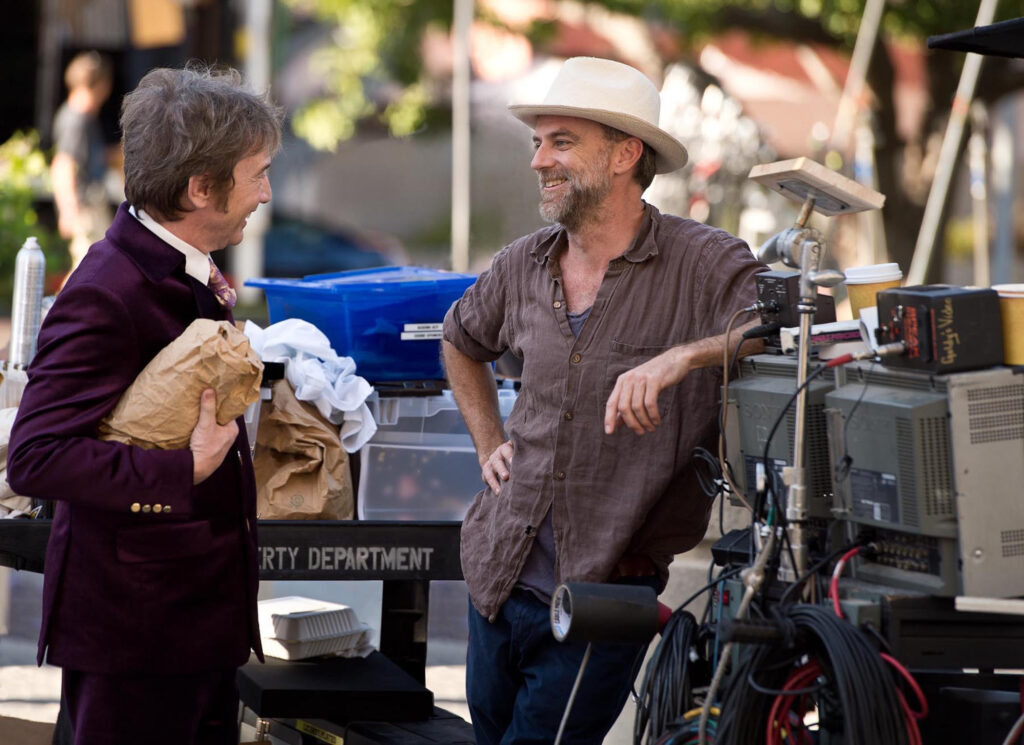
There are a few other observations I noticed while watching this film. The first is how it didn’t feel like a “PTA Picture.” And in some ways, I believe that this is his first faithful adaptation. There Will Be Blood was inspired by Upton Sinclair’s Oil!, but only loosely. The most “Anderson” thing about this film is that it takes place in Los Angeles in the 1970s, but perhaps, that is what drew him to the book? It also makes me question, “What is a PTA Picture?” If you had asked someone in the year 2000, they would have probably used the phrase, “personal epics.” Asked in 2012, some may have used the phrase “epic dramas.” Now, with this film, Anderson goes in a comedically zany direction. It’s funny to me how he filmed this stoner comedy-mystery between two slow burn character studies, The Master and Phantom Thread. Another thing to note is the structure. Unlike most of Anderson’s previous films, this one has a definitive end point. The case has been solved and the story is over. Other films like Boogie Nights, Magnolia, The Master, and There Will Be Blood are slice of life films. When I say that, I mean that the story can start anywhere and it could end anywhere. Anderson chooses a start point, and although those films could go on much longer, he chooses the appropriate end point. With Inherent Vice, the film runs its course.

The film managed to score Anderson an Oscar nomination for Best Adapted Screenplay. Additionally, costume designer Mark Bridges earned a well deserved nomination for the film’s costume design. Like Anderson’s next film, Phantom Thread, I remember watching it and being bored. It’s streaming on Netflix as of this writing. I’m hoping to watch it with renewed enthusiasm and hope I can find more redeeming qualities the second time around. Until then, thanks for reading.